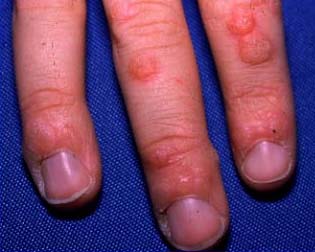
#1 Doctor: Resolve to let patients speak without interruption and describe their symptoms.
Patient: Resolve to focus on the problem I am seeing the doctor about and not come with a list of 10 complaints for a 15-minute office visit.
#2 Doctor: Resolve to keep a pleasant tone of voice when answering night and weekend phone calls from the answering service, patients, or nurses.
Patient: Resolve to get my prescriptions filled during office hours, not forget my medications while traveling, and to use night and weekend phone calls for emergencies only.
#3 Doctor: Resolve to exercise a minimum of??four times a week for better health.
Patient: Ditto.
#4 Doctor: Resolve to train my staff and model excellent customer service for patients.
Patient: Resolve to understand that getting an instant referral, prescription, note for jury duty, or letter to my insurance company??from??my doctor is not my God-given right and I will stop??[complaining] if it doesn’t happen the day I request it.
#5 Doctor: Resolve to give at least one compliment a day to my office staff, child, and spouse.
Patient: Ditto.
#6 Doctor: Resolve to apologize when I am late seeing a patient who has been waiting.
Patient: Resolve to understand that when the doctor is late?? another human being needed attention. It might be me in the future who needs extra time.
#7 Doctor: Resolve to do one new thing a month that is novel (??See a??play? Travel? Do a special activity with a child or spouse? Learn a new computer skill? Play music? See a friend?)
Patient: Ditto.
#8 Doctor: Resolve to review all insurance payers and drop contracts that are not paying market rates for my skills and education. I will not go bankrupt.
Patient: Resolve to try and understand the medical economics that require my doctor to drop my insurance. If my doctor isn’t worth paying a little more for the visit, I will find a new doctor.
#9 Doctor: Resolve for each new prescription I write I will explain five things: The name of the medication, the reason for the medication, the side effects, how to take it, and how long to take it.
Patient: Once the doctor has prescribed a medication, I will take it as prescribed or let the doctor know right away if I am stopping it.
#10 Doctor: I will give thanks that I have a wonderful profession where I can help people in a special way.
Patient: I will not underestimate the many years of training and sacrifice my doctors have gone through and I will appreciate that they are trying their hardest to help me stay healthy.

 Imagine a water bottle that knows how hard and how far you are running, how much you’re drinking, what’s the outside temperature, and, based on all these variables, the device calculates when you need to have a drink. Cambridge Consultants have developed the i-dration bottle that does just that.
Imagine a water bottle that knows how hard and how far you are running, how much you’re drinking, what’s the outside temperature, and, based on all these variables, the device calculates when you need to have a drink. Cambridge Consultants have developed the i-dration bottle that does just that.

 The British Medical Journal reported on a study of??toothbrushing and found that people with poor oral hygiene had an increased risk of cardiovascular disease and heart attack.
The British Medical Journal reported on a study of??toothbrushing and found that people with poor oral hygiene had an increased risk of cardiovascular disease and heart attack.

 New England Patriots NFL quarterback Tom Brady was on his way to practice when he crashed into a minivan which allegedly ran a red light.??His Audi S8 car T-boned the other vehicle a few blocks from his home.??A relieved New England Patriots owner Bob Kraft noted after the accident:
New England Patriots NFL quarterback Tom Brady was on his way to practice when he crashed into a minivan which allegedly ran a red light.??His Audi S8 car T-boned the other vehicle a few blocks from his home.??A relieved New England Patriots owner Bob Kraft noted after the accident:
